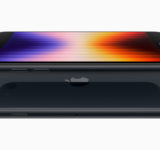Qualcomm has added two Plus versions of its existing chipsets together with the two entirely new ones to its portfolio, the Snapdragon 778G+, Snapdragon 695, Snapdragon 680, and Snapdragon 480+. While the focus seems towards 5G, Qualcomm does include a new option for 4G-only requirements as well. All these except the Snapdragon 480+ are built upon the 6nm architecture.
Now, without further ado, let’s get into the details.
Snapdragon 778G+
The non-Plus variant of the Snapdragon 778G+ was widely adopted among the premium mid-rangers. Also, like the SD 778G, the SD 778G+ is also built upon 6nm fabrication, though with so-called enhancements to boost clock speeds.
The Kyro 670 Prime core is clocked at 2.5GHz up from 2.4GHz. Similarly, the Adreno 642L GPU has been said to be tuned to deliver 20% greater performance. The remaining X53 5G modem pledges 3.7Gbps downlinks and 1.6Gbps uplinks as earlier, not to mention a triple IPS (Spectra 570L) too along with others.
Snapdragon 695
A successor to the Snapdragon 690 chipset, the Snapdragon 695 chip supports mmWave 5G together with a few improvements geared towards performance.
The CPU and the GPU performance are said to increase by up to 15% and 30% respectively. These are accredited to the new CPU cores, Kyro 660 and Adreno 619. Unlike SD 690, SD 695 gets a newer 6nm node too.
Snapdragon 680
The Snapdragon 680 carries a 4G LTE modem with some features reiterated from the descendent whilst some freshly added including the Kryo 265 CPU cores. It keeps the same old Adreno 610 GPU.
On the upside, there is a triple ISP, a Spectra 346 that lets the chipset process image data from a total of three camera sensors at once.
Snapdragon 480+
Going back to the Snapdragon 480, it was the first chipset from Qualcomm in its 400-series that came with a 5G modem thereby making it an ideal choice for affordable 5G smartphones. The Snapdragon 480+ is actually the same with some enhancements.
Though SD 480+ carries an 8nm fabricated chip with Kryo 460 CPU cores and Adreno 619 GPU, the prime CPU is clocked at 2.2GHz up from 2.0GHz. The GPU sees an upgrade too.
Snapdragon 480+ is able to drive a 1080p+ display panel with up to 120Hz refresh rate. Its X51 modem is compatible with both the sub-6GHz and mmWave 5G networks.
Although we are yet to witness the real-life results, the Snapdragon 680 will expectedly deliver increased power efficiency while the Snapdragon 480+ will deliver enhanced speed. On the other hand, their prices will determine how the smartphone makers will respond.
HMD Global has reportedly shown interest in SD 480+, Oppo seems interested in SD 695 given its mmWave support, and Xiaomi has voted for SD 695 and SD 778G+. The likes of Honor, Motorola, and Vivo are on the list as well.







